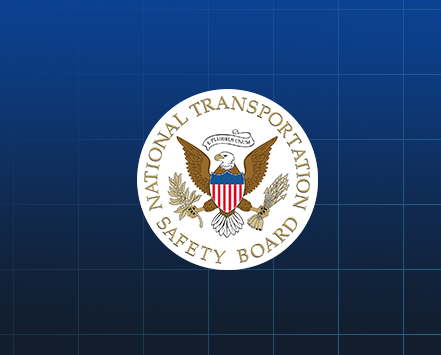NTSB releases report on Sacramento Regional Transit District light-rail vehicles – Updated with SacRT’s response to NTSB Report
Written by David C. Lester, Editor-in-Chief
The National Transportation Safety Board released its report on the August 22, 2019 collision between Sacramento Regional Transit District light-rail vehicles in Sacramento.
After reading our story on the NTSB SacRT report, SacRT contacted us with their response to the report, which can be found below the original story.
Overview
Thirteen people were transported to area hospitals with non-life-threatening injuries. Neither train derailed, and both trains experienced minimal structural damage.
Safety issues identified in this report include:
- Performance deficiencies of the transportation supervisor as a controller;
- SacRT’s failure to monitor the transportation supervisor’s performance to ensure competency;
- Irregular train operator reporting of train delays to Metro Control;
- SacRT’s undefined testing practices on the mainline tracks; the impact of the California Public Utilities Commission’s instruction to test vehicles after revenue hours;
- And, the lack of transmission-based train control use on the SacRT light rail system.
Four recommendations were made to the Sacramento Regional Transit District and one recommendation was made to the California Public Utilities Commission; one recommendation was reiterated to the Federal Transit Administration.
Recommendations
The recommendations made were:
- Ensure employee performance is monitored and evaluated while on a performance improvement plan for the intended duration of the plan or until the employee has demonstrated competency in the position they occupy;
- Conduct a risk assessment of mainline high-speed testing and revise testing schedules and communication requirements to ensure that necessary controls are in place;
- Improve the train delay reporting process;
- And, install a transmission-based train control system.
Also, the NTSB recommended that the California Public Utilities Commission revise its instruction to SacRT and require SacRT to conduct a formal risk assessment of high-speed testing.
Further, the NTSB reiterated a recommendation to the Federal Transit Administration to require rail transit agencies to implement transmission-based train control systems that prevent train collisions.
You can read the full report online.
For brief news updates and commentary, please follow me on Twitter @davidclesterRTS
SacRT’s Response to NTSB Report Regarding August 2019 Light Rail Incident
The Sacramento Regional Transit District (SacRT) issued the below statement and background following the National Transportation Safety Board’s (NTSB) release of findings in its investigation of the August 22, 2019, SacRT light rail train incident. Immediately following the accident in 2019, in advance of NTSB releasing the final report, SacRT as well as the California Public Utilities Commission (CPUC), completed independent investigations to quickly assess and recommend strong improvement actions, and SacRT implemented extensive best industry practices to ensure a safe light rail system.
Background
As stated in the NTSB report, on August 22, 2019, at approximately 9:38 p.m., a collision occurred between two
SacRT light rail trains operating on the Blue Line. A passenger light rail train (revenue train) collided with a stopped light rail train undergoing maintenance testing (test train) on the same track. The incident occurred on the Blue Line on a section of track in between the Roseville Road and Marconi/Arcade light rail stations.
The train in revenue service was operating in a north direction on the outbound track and was approximately 15 minutes behind its designated schedule due to busier than usual accessible ramp boardings. The technician operating the test train had received permission from SacRT’s light rail controller to enter the main track in order to test the train’s propulsion system. The test train entered the outbound track from SacRT’s maintenance facility and proceeded north in preparation to conduct testing.
After completing an initial test, the test train reversed direction to return to the maintenance yard. As the trains approached each other, the light rail vehicle technician operating the test train realized that both trains were on the same track prompting him to initiate an emergency brake application, stopping the test train prior to the collision. Neither train derailed, and both trains experienced minimal structural damage.
SacRT continues to extend deepest sympathies to all of the individuals and families who were affected and is very grateful that there were no major or life-threatening injuries as a result of this collision. There were a total of 27 people onboard, 24 on the revenue train, and three on the test train conducting routine maintenance testing. A total of 13 people were sent to area hospitals with non-life-threatening injuries.
Preliminary examination of the maintenance records, track structure and a simulation of the signals showed the systems all functioned as designed. At the time, it was standard safety practice for maintenance personnel to test trains that have been repaired on the main line shared with revenue service trains. Testing is required by state and federal regulations to ensure mechanical issues have been repaired correctly prior to the train being placed back in revenue service.
Per SacRT procedures, the on-duty train dispatcher/train controller is required to issue a bulletin on the radio to other trains operating on the mainline notifying them that the test train was entering the track. Each train operator is required to acknowledge the receipt of that bulletin via radio communication back to the dispatcher/controller, who makes a notation of every train that responded. However, on this night, the dispatcher/controller did not communicate the bulletin, nor did they access the Consist Manager, the software program that tracks train movement via GPS, which is how the NTSB report cited human error as a contributing factor.
The primary duties of a train controller consist of talking on the radio with train operators, including issuing bulletins and orders. They are also responsible for any abnormal or unusual moves that need to happen, especially during service disruptions.
Improvement Actions Taken by SacRT:
As a result of SacRT’s initial assessment, sweeping safety improvements occurred. Several senior leadership positions were restructured/created to increase administrative oversight and enhance SacRT’s light rail safety program, and operational policies and procedures were revised and implemented. SacRT is also working closely with union partners to ensure more accountability and swift action if needed.
Prior to the 2019 accident, there was one executive member/vice president in charge of both the light rail and bus divisions, and one director in charge of both light rail operations and maintenance departments. Both leadership roles were restructured and amended to provide additional oversight and management of both divisions and individual departments. There is now one executive member/vice president overseeing the light rail division and one executive member/vice president overseeing the bus division. The light rail division now has two dedicated directors, one for light rail operations and another for light rail maintenance, and the light rail control center always has a minimum of two supervisors scheduled, so that one person dispatches while the other controls train movement.
In addition, a former Sacramento Police Department Captain was hired by SacRT in October 2019 as the vice president/chief safety officer to lead the security, safety and customer satisfaction divisions superseding the
limited role of chief of safety. Under the new structure, the safety department has almost doubled in size over the past three years, broadening the scope of its activities and training programs to help foster a culture in which safety is prioritized and integrated into SacRT’s strategic plan of delivering safe, accessible, and reliable services.
Although not necessarily cited as a contributing factor in the cause of the August 2019 incident, SacRT has gone above and beyond to put laser focus on improving its safety program resulting in the implementation of the following additional mitigations and operating procedures:
Employee Training and Performance Monitoring:
- Altered staffing in the train control center by adding additional resources and oversight. A minimum of two transportation supervisors are always scheduled in the control center so that a single person is not dispatching and controlling light rail trains simultaneously.
- Increased the light rail training staff to improve the student-to-instructor ratio and provide more time for direct student/instructor interaction.
- Re-designing Rule Book Training Program
- Improved daily trainee oversight and evaluation and weekly feedback to trainees.
- Enriched training methods such as tabletop exercises and targeted training have been implemented.
- Operator training programs were extended an additional two weeks, from eight to 10 weeks; this allows
for more time to review procedures and ensure proficiency. - Established more definitive standards in which refresher training is required.
- Light rail supervisors received additional training on train tracking software.
- Light rail operations implemented occurrence-related on-board ride checks for operators.
SacRT champions a safety-first culture in everything we do. Prior to the 2019 light rail incident, SacRT was working closely with the California Public Utilities Commission (CPUC) on industry best safety practices and policies, including revamping the reporting structure for administrative staff with a renewed focus on workplace practices on all levels. This effort led to expanding other new and innovative ways to keep the SacRT system safe, incorporating paid fare zones in all light rail stations; observing operating speeds at station approaches; creating a new job classification called “Transit Ambassador” that moved away from fare-enforcement to instead focus on customer service; adding public address systems at all light rail stations to quickly address nuisance behavior; and incorporating an Adopt-a-Station program requiring SacRT staff, including senior leaders, to regularly visit assigned stations and report issues.
Procedure and Process Improvements:
- Test trains are no longer operate on the mainline track during revenue hours.
- Comprehensive track access procedure is being developed that will incorporate all work, testing, and training requiring track access. This will include track maintenance, inspections, operations training, and train testing. It will also include all levels of train control, traction power, and flagging protection and communication required for each access type.
- Light rail operations is developing a comprehensive Light Rail Supervisor Certification Program. The program will include not only daily oversight of trainees, but also a formal daily training evaluation and feedback process to track their progress in real-time.
- Improved vegetation control to improve visibility along the mainline.
Risk Assessment and Testing Controls:
- A hazard analysis is being conducted to identify and mitigate any risks before resuming train testing during revenue hours, including standard operating procedures outlining testing controls and communication procedures.
- SacRT Engineering and Information Technology (IT) department is evaluating future Supervisory Control and Data Acquisition (SCADA) integration. Note, Positive Train Control is typically only used for freight and commuter railroad systems.
As a result of quickly implementing the stringent policies, procedures and leadership changes listed above, SacRT has successfully turned around and progressed its safety program to one recognized with several national top industry awards, including the American Public Transportation Association’s 2021 and 2020 rail safety and security gold award; the American Public Transportation Association’s 2021 Outstanding Public Transportation System of the Year Award; and the Federal Transportation Security Administration’s 2019 Gold Standard Award for System Security.





